alpha-Amylase, Enzyme Activity (TBP0054)
$35.00 – $140.00
| SKU | Stock | SIZE | Price | Quantity | ||
|---|---|---|---|---|---|---|
| TBP0054-500KU | Yes | 500 KU | $35.00 | |||
| TBP0054-2500KU | Yes | 2500 KU | $140.00 |
- Description
- Terms
- Additional information
- Documents
- Reviews (0)
Description
Product Details
Form: Freeze-dried powder
Solubility: Distilled water or dilute buffer
Stability: Store at -20° C (-4° F)
Activity: 50 U/mg protein
Protein: 90%
Catalog No.: 146A0100
Unit Definition
The amount of enzyme which liberates, from soluble starch, one micromole of maltose per minute at 25° C, pH 6.9.
Assay Method
The reducing groups liberated from starch hydrolysis reduce 3,5-dinitrosalicylic acid, resulting in formation of a colored product which can be measured spectrophotometrically at 540 nm.
Applications
Alpha amylase (EC 3.2.1.1) is able to catalyze the hydrolysis of starch (amylose and amylopectin) to a significant extent resulting in the release of maltose. The enzyme is found in nearly all plants, animals and microorganisms. The enzymes from various sources exhibit marked differences in physical, chemical and catalytic properties. Bacterial amylases and those from porcine pancreas and human saliva have been extensively studied. Alpha amylase from porcine pancreas has a molecular weight of about 50,000 and it exhibits optimum catalytic activity at pH 7.0. The E 1%/280 is 26.0.
Alpha amylase is widely used in the food industry as a clarifying agent. Determination of serum alpha amylase activity, for the diagnosis of acute pancreatitis, is a widely used procedure in clinical medicine. Additionally, it has been reported that elevated alpha amylase activity in serum also occurs in mumps, renal disease and abdominal disorders such as cholecystitis.
Reagents
- 0.02 M Sodium phosphate buffer, pH 6.9 containing 0.006 M sodium chloride.
- 2.0 M Sodium hydroxide.
- Dinitrosalicylic acid color reagent. Dissolve 1.0 g 3,5-dinitrosalicylic acid in 20 ml 2 M NaOH. Add slowly, 30.0 g sodium potassium tartrate tetrahydrate. Dilute to a final volume of 100 ml with distilled water. Store in a tightly sealed container and protected from CO2. Stable for 2 weeks.
- 1% Starch. Dissolve 1.0 g soluble starch in 100 ml 0.02 M sodium phosphate buffer, pH 6.9, containing 0.006 M NaCl. Bring to a gentle boil to dissolve. Cool and make volume up to 100 ml, with distilled water, if necessary. Incubate at 25° C for 5 minutes prior to assay.
- Enzyme (a-amylase) solution. Dilute to a concentration of 1-10 µg/ml. Prepare at least 3 different concentrations within this range. Must be prepared fresh immediately prior to assay.
Procedure
- Adjust spectrophotometer to 540 nm and 25° C and water bath at 25° C.
- Pipette 0.5 ml of various enzyme dilutions into a series of numbered test tubes. Include a blank tube containing 0.5 ml distilled water.
- Incubate tubes at 25° C for 5 minutes to achieve temperature equilibration.
- At timed intervals, add 0.5 ml starch solution (at 25° C) and incubate exactly 3 minutes at 25° C.
- Exactly 3 minutes following the addition of starch, add 1 ml dinitrosalicylic acid reagent to each tube at timed intervals.
- Place all tubes in a boiling water bath for 5 min.
- Cool to room temp and add 10 ml distilled water to each tube. Mix well.
- Read absorbance at 540 nm after zeroing the spectrophotometer with the blank.
- Determine micromoles of maltose liberated from a maltose standard curve.
Additional information
| SIZE | 2500 KU, 500 KU |
|---|
Be the first to review “alpha-Amylase, Enzyme Activity (TBP0054)”
You must be logged in to post a review.

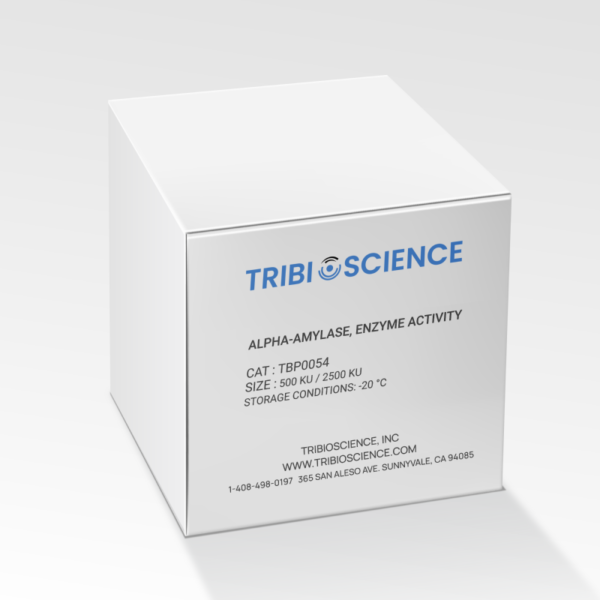
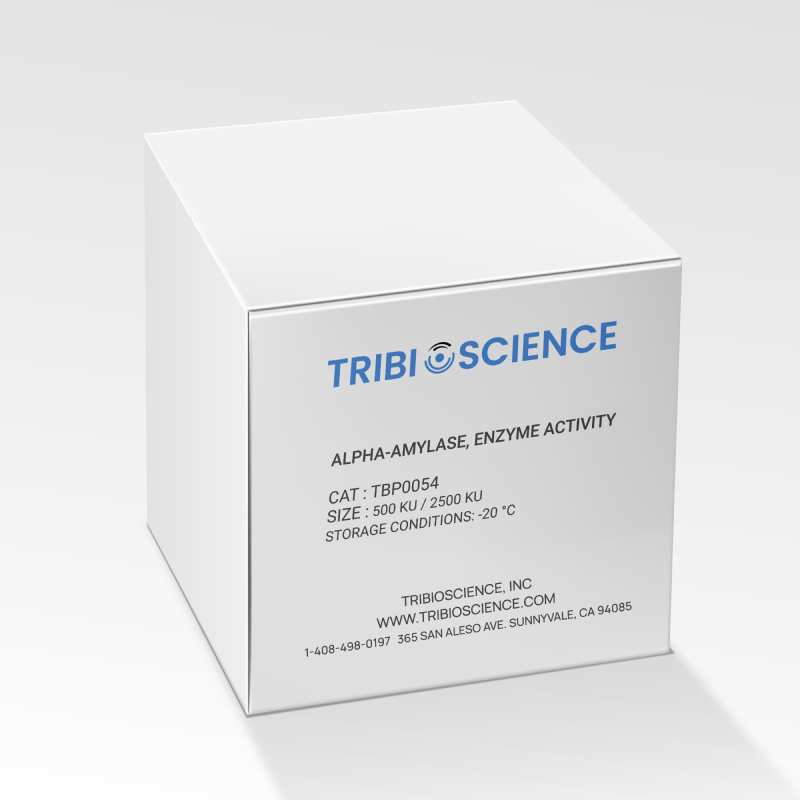
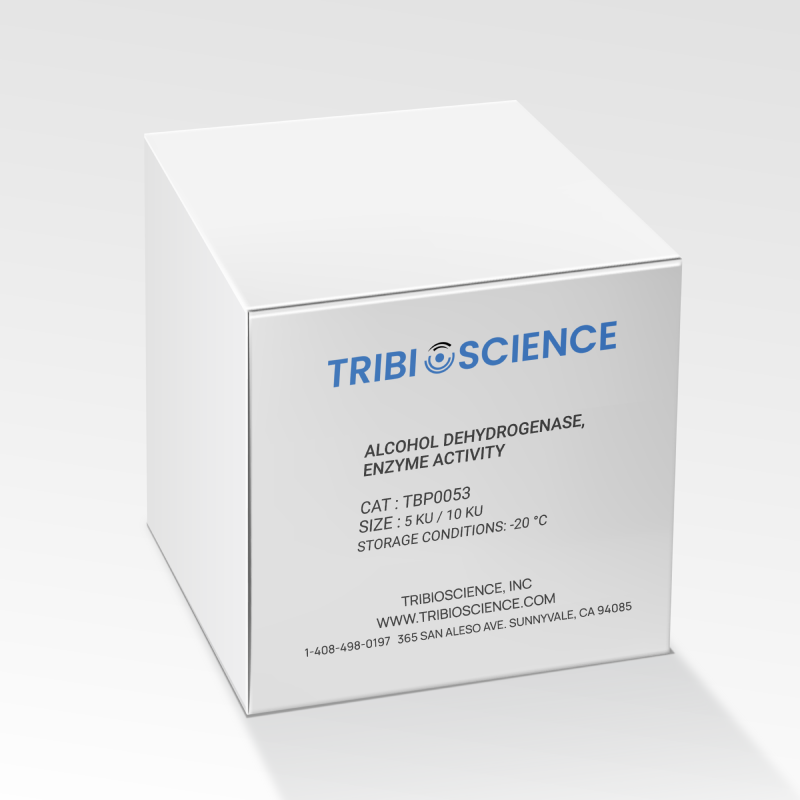
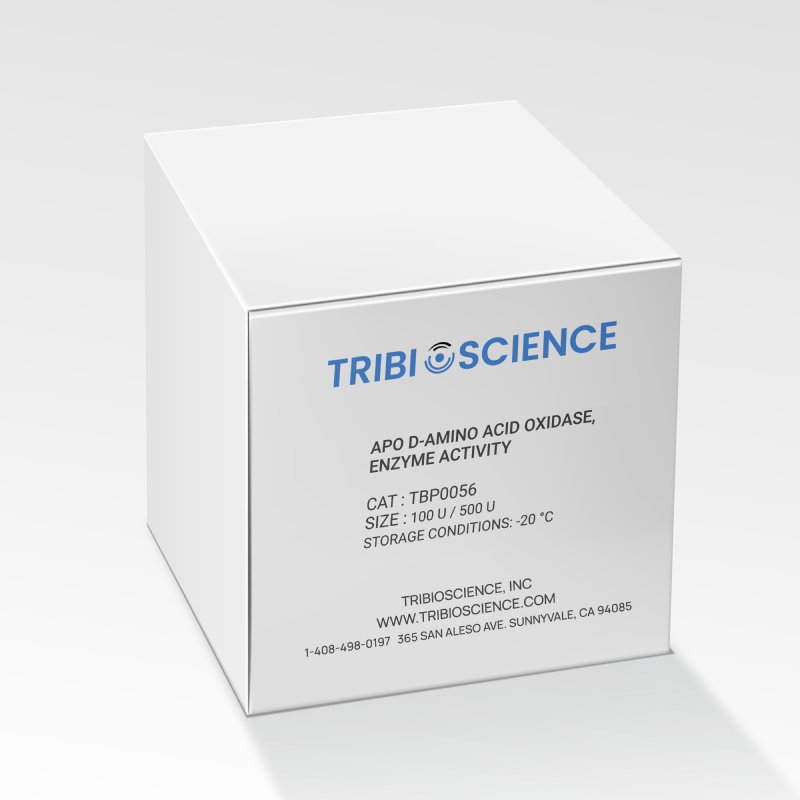
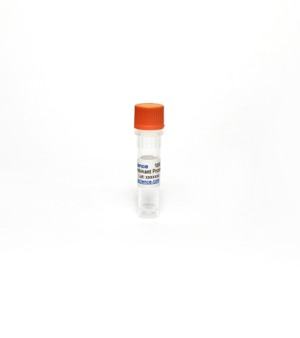
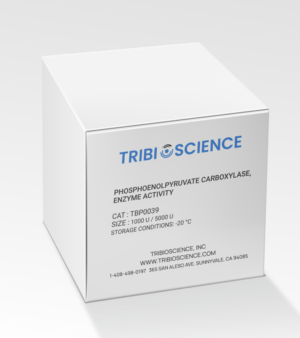
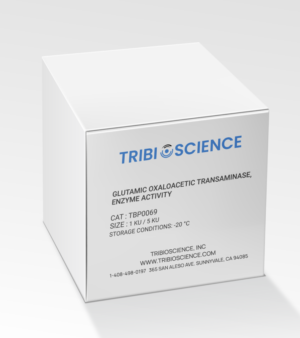
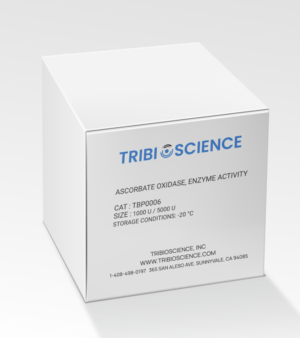
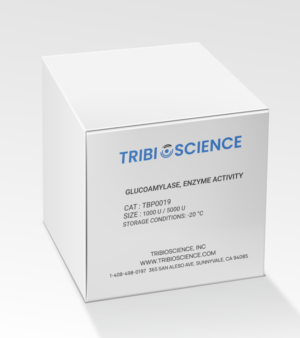
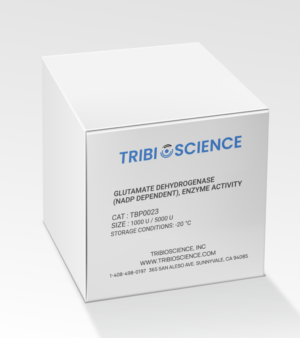
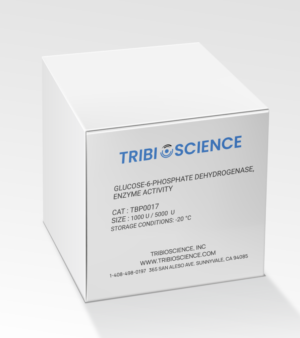


Reviews
There are no reviews yet.